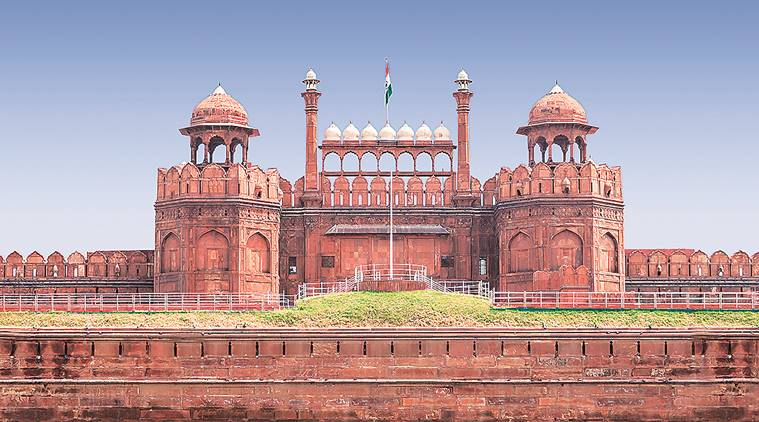 Red Fort adopted by Dalmia Bharat Group under Tourism Ministry scheme
Red Fort adopted by Dalmia Bharat Group under Tourism Ministry scheme
The “leasing out” of the Red Fort to the Dalmia Bharat Group ran into criticism and outrage over the weekend. But this isn’t the first or only instance of adoption of an iconic monument under the “Adopt a Heritage” scheme notified by the Tourism Ministry last year. Government-owned NBCC has adopted Purana Qila, and SBI Foundation, the CSR arm of state-owned State Bank of India, the capital’s Jantar Mantar. Yatra.com has Hampi, Qutub Minar, and Ajanta and Ellora caves, and GMR and ITC have submitted proposals for the Taj Mahal. Ninety-three Archaeological Survey of India-ticketed monuments are open for bidding; 30 companies have been selected to “adopt” some of these sites.
What will Dalmia do?

As per the MoU, the Dalmia Group will spend Rs 25 crore over the next five years on the light and sound show, turnstile gates, app-based multi-lingual audio guide, free Wi-Fi, a cafeteria, and construction of ramps for differently-abled visitors. NBCC’s mandate at Purana Qila is similar. According to Union Tourism Minister K J Alphons, “across the world, local communities protect monuments”, and stakeholders will spend as part of CSR activity, and not earn any money.
How were they picked?
Monument Mitras, as these organisations are called, have been selected through “Vision Bidding”, described as the process of selection of the agency with the best vision for the heritage site. The CSR arms of the Monument Mitras will fund the maintenance and upkeep work, and will get visibility on the premises and on the Incredible India website.
Are there any checks?
Story continues below this ad
The compliance guidelines on the “Adopt a Heritage” website says, the five-year contract “can be terminated if the company does not comply with the ASI guidelines”. The legal status of the monument will not change after adoption, the company will not collect any money from the public unless allowed by the government, and profits, if any, will be used to maintain and upgrade tourism facilities. An Oversight and Vision Committee, co-chaired by the secretaries of Tourism and Culture, and with the D-G, ASI, as member, will keep a watch. Projects will be evaluated on increase in tourist footfall, improvement in overall tourism sector perception, and increase in employment generation, a Tourism Ministry official said.
What do others do?
Corporates frequently sponsor the development and upkeep of sites across the world, especially in Europe. The Colosseum recently underwent restoration work sponsored by the Italian luxury label Tod’s, while Fendi spent $2.2 million on restoring Trevi Fountain. Tourist entry at Angkor Wat, Cambodia, is managed by the Sok Kong Import Export Company, which pays the government a fee. American Express says it has given nearly $60 million since 1974 to preserve more than 500 iconic historic sites worldwide.
So, are fears misplaced?
According to conservation architect A G K Menon, “Governments can’t do everything, and corporates can be allowed, provided they do it sensibly”. However, a retired ASI archaeologist cautioned that the organisation can’t be lax, and must monitor the process and progress of the maintenance and upkeep work. Even though the government has stressed that corporates will have limited “access” to core areas, and there will be “no handing over of monuments”, Alphons told The Indian Express that “at the sites where there is no ASI involved, the external parties may be allowed to touch the building as well, subject to the state government’s approval.”

 Red Fort adopted by Dalmia Bharat Group under Tourism Ministry scheme
Red Fort adopted by Dalmia Bharat Group under Tourism Ministry scheme





































